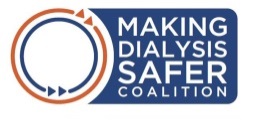Infection Prevention
Enrolling a New Facility in National Healthcare Safety Network (NHSN)
Annual NHSN Training
Each year, the CDC requires that one person from each facility complete the Annual NHSN Dialysis Event Surveillance Training. To receive credit for completing the required training, follow these steps:Complete the Training
-
Download the training guide for assistance
-
Print out the certificate of completion for your records
BSI Reduction Resource Bundle
Additional Resources
CDC Staff Competencies
Assess staff upon hire and at least yearly in the following competencies. (Note: Not all categories will be applicable to all staff.)-
Gloving and Hand Hygiene (all staff) – includes recognition of appropriate situations for glove use/hand hygiene, proper use and removal of gloves, and proper hand hygiene technique.
-
Catheter Dressing Change Technique – includes correct performance of hand hygiene, and use of gloves, and correct use of antiseptics (proper application and allow drying, etc.).
-
Vascular Access Technique – includes correct performance of hand hygiene and use of gloves, catheter site and port/vascular access antisepsis, and aseptic technique.
-
Safe Injection/Safe Medication Practices – includes proper technique for:
-
Parenteral medication preparation, handling, administration and storage (e.g., not in patient station, etc.)
-
Use of aseptic technique
-
Proper hand hygiene before preparing or administering medications or infusions
-
Proper cleansing of medication injection ports and medication vial diaphragms
-
Proper use and handling of single use vials and bags
-
FREE CEUs Below!
Areas for Patient Education
Patients with Catheters-
Hand hygiene
-
General access care at home (e.g., bathing with a catheter)
-
Signs and symptoms of infection
-
How to respond if problems with catheter develop outside of the dialysis center
-
Risks associated with catheters/importance of permanent access
-
Basic infection control practices during catheter accessing process (as a means to engage patients)
-
Hand hygiene
-
Washing the access site prior to treatment
-
General access care at home (e.g., don’t scratch or pick at the site)
-
Signs and symptoms of infection
-
How to respond if problems with access develop outside of the dialysis center
-
Basic infection control practices during cannulation process (as a means to engage patients)
Join the Effort Below!
Catheter Reduction Resource Toolkit
The FFCL Change Package includes 13 Change Concepts that provide a roadmap for implementation of the K/DOQI vascular access recommendations. Take a look at the overview.
Lifeline for a Lifetime
Patient Resources
-
Patient Guide for Planning for a Vascular Access
-
There is a simple checklist in this manual that will help engage your patients to track progress through the steps toward catheter freedom.
-
Provide a copy of “My Access Plan / My Access Plan (SPANISH)” to call catheter patients being referred for evaluation and placement of a permanent access.
-



